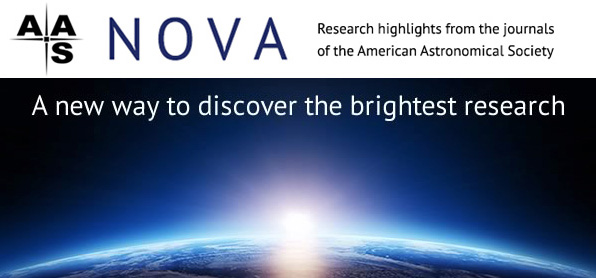Highlights from AAS Nova: 2-15 April 2017

Susanna Kohler American Astronomical Society (AAS)
AAS Nova provides brief highlights of recently published articles from the AAS journals, i.e., The Astronomical Journal (AJ) and The Astrophysical Journal (ApJ), ApJ Letters, and ApJ Supplements. The website's intent is to gain broader exposure for AAS authors and to provide astronomy researchers and enthusiasts with summaries of recent, interesting research across a wide range of astronomical fields.
The following are the AAS Nova highlights from the past two weeks; follow the links to read more, or visit the AAS Nova webpage for more posts.
14 April 2017
Habitability of the TRAPPIST-1 System
A new study challenges the habitability of the seven Earth-sized, terrestrial planets discovered around the M-dwarf star TRAPPIST-1.
12 April 2017
New Discoveries Fill the Quasar Gap
Quasars are cleverly camouflaged at some high redshifts, making them tough to spot. Now there’s a way to detect these distant monsters in spite of their disguise.
11 April 2017
Baby Galaxies Blowing Bubbles
Astrobites reports on the galaxies that blew the first ionized bubbles in the early universe, ending the Dark Ages.
10 April 2017
PACMan to Help Sort Hubble Proposals
Every year, astronomers submit over a thousand proposals requesting time on the Hubble Space Telescope. A computer program may help sort these proposals in the future.
7 April 2017
The Search for Ringed Exoplanets
Are planetary rings as common in our galaxy as they are in our solar system? A new study shows how to hunt for them — and then does!
5 April 2017
ALMA Examines a Distant Quasar Host
A team of scientists has used ALMA to learn more about the host galaxy of the most distant quasar known.
4 April 2017
Fast and Furious Planet Predictions
Sometimes, computers are too slow to get the job done. Astrobites reports on a faster way to predict whether planetary systems are stable.
3 April 2017
Featured Image: Mini-Disks in a Black-Hole Binary
New simulations show how gas is passed back and forth between the accretion disks surrounding the two black holes in a binary system.


